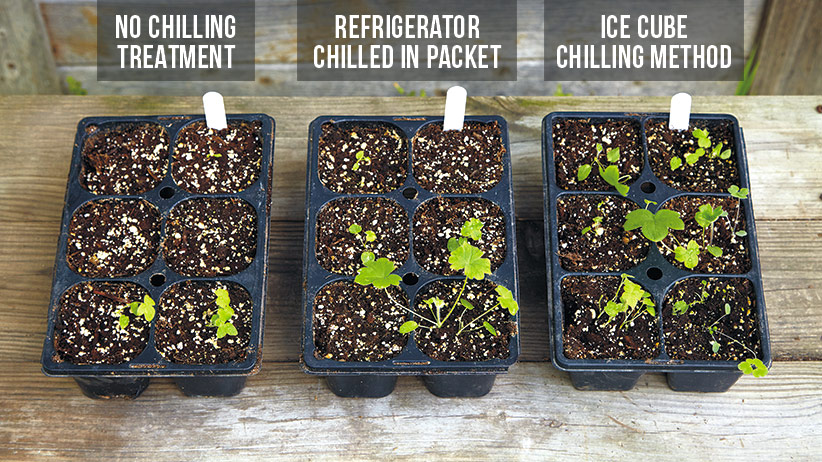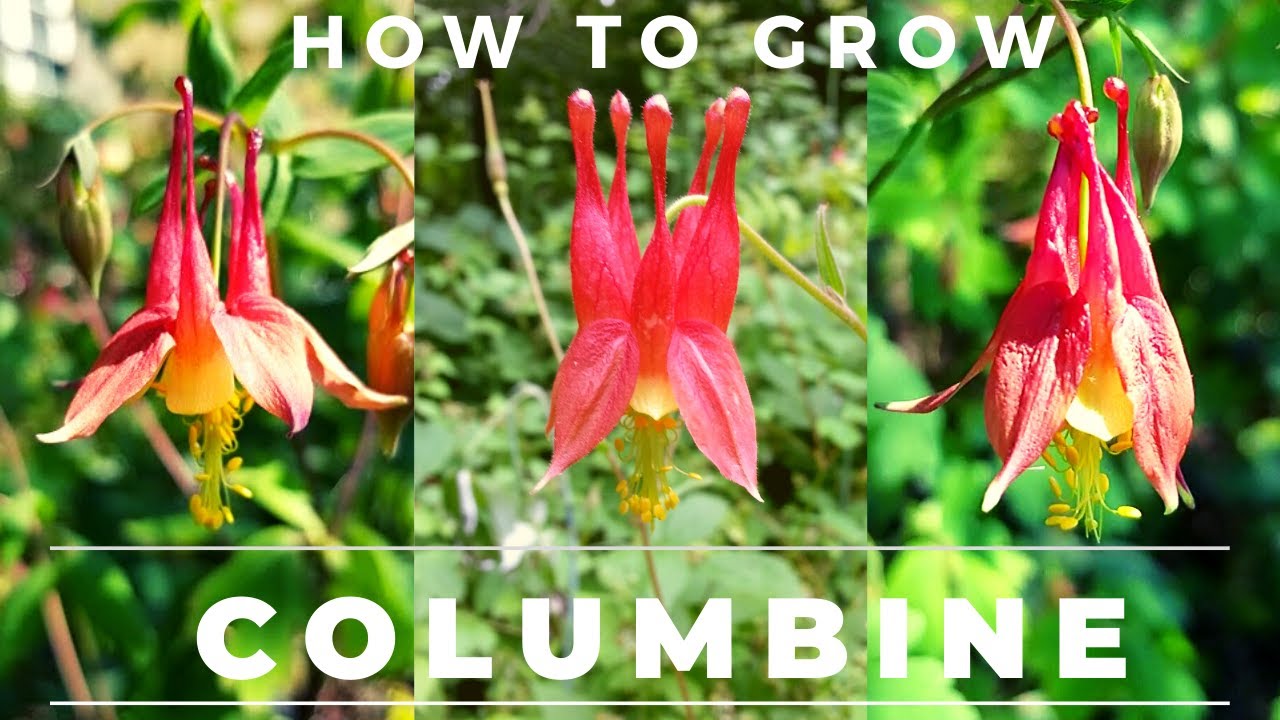To start columbine seeds, sow them in damp soil outdoors after the last frost date in your region. Water them regularly and provide partial shade.
Columbines are beautiful and delicate flowers that can brighten up any garden. If you want to grow these lovely flowers from seeds, you’re in luck. Starting columbine seeds is a relatively easy process that requires a bit of patience and some basic gardening skills.

Credit: www.gardengatemagazine.com
We’ll guide you through the steps of starting columbine seeds, from selecting the right time and location to caring for the seedlings. By following these simple instructions, you’ll be able to enjoy the beauty of columbines in your own garden. Let’s get started!
How to Start Columbine Seeds : Step by Step Guide
Selecting The Right Seeds
When it comes to starting columbine seeds, it’s important to choose the right seed variety. Columbine plants come in various colors, sizes, and growth habits, so it’s essential to differentiate between the different seed varieties before making a selection.
One important factor to consider is the flowering period of the columbine variety. Some varieties bloom in early spring, while others bloom in summer or fall. By selecting a mix of varieties, you can enjoy continuous blooms throughout the growing season.
Another consideration is the color of the flowers. Columbines come in a range of hues, including blue, purple, pink, white, and yellow. Selecting a combination of colors can create a vibrant and eye-catching display in your garden.
Furthermore, columbine plants vary in size and growth habit. Some varieties are more compact and suited for containers or small gardens, while others are taller and better suited for borders or beds.
In addition to considering the flowering period, color, and size, it’s crucial to choose high-quality seeds from reputable sources. Look for seeds that are fresh, viable, and have a good germination rate.
By carefully differentiating columbine seed varieties and selecting the best seeds for starting indoors, you can ensure a successful and beautiful columbine garden.
Preparing The Seeds
To start columbine seeds successfully, it is important to understand the process of seed stratification. This technique helps break down the natural dormancy of the seeds, allowing for optimal germination. One effective method is pre-soaking the seeds before planting. Begin by placing the columbine seeds in a container with room temperature water.
Let them soak for 24 hours, ensuring that they are fully submerged. Afterward, drain the water and transfer the seeds to a damp paper towel. Fold the towel over the seeds to create a moist environment, then seal them in a plastic bag. Place the bag in the refrigerator for approximately four weeks. Regularly check the seeds to ensure they remain moist but not waterlogged. Once the stratification period is complete, you can proceed with sowing the seeds in a suitable growing medium. With proper preparation, you can maximize the germination success of your columbine seeds.
Creating The Ideal Germination Environment
When starting columbine seeds, it is important to create the ideal germination environment. This begins with selecting the right containers for seed germination. Choose shallow containers with drainage holes, such as seed trays or plastic pots. This ensures proper water drainage and prevents the seeds from becoming waterlogged.
Next, prepare a suitable potting mix for seed germination. Use a well-draining mix that is lightweight and sterile. A mixture of perlite, vermiculite, and peat moss can work well. This helps retain moisture while allowing for good air circulation around the seeds.
Additionally, provide the optimal temperature and lighting conditions. Columbine seeds typically germinate best at temperatures between 60-70°F (15-21°C). Place the containers in a warm location, such as near a south-facing window or on a seedling heat mat. For lighting, provide bright indirect sunlight or use fluorescent lights set about 6 inches above the seedlings.
Preparing For Transplantation
To successfully start columbine seeds, the first step is determining the right time for transplantation. Transplanting columbine seedlings should be done when they have grown their first set of true leaves.
At this stage, they are strong enough to handle the process. Before transplantation, it is important to prepare the outdoor bed or containers properly. Ensure that the soil is well-drained, rich in organic matter, and slightly acidic. Clear the area from weeds or any other unwanted plants that might hinder the growth of the seedlings.
When transplanting into containers, choose ones with drainage holes to prevent waterlogging. Provide adequate sunlight and water to the transplants, while protecting them from extreme weather conditions and pests. With proper care and attention, your columbine seedlings will thrive and bloom beautifully in their new location.
Transplanting Techniques
Transplanting techniques are crucial for successful growth of columbine seeds. When transferring seedlings to larger pots, it is important to handle them carefully to minimize root damage.
Start by filling the new pots with well-draining potting soil, leaving about an inch of space below the rim. Gently loosen the seedlings from their original pots, being careful not to disturb the roots. Place each seedling in the center of the new pot, positioning it at the same depth as it was before. Firmly press the soil around the seedlings to eliminate any air pockets. Water the newly transplanted seedlings thoroughly, ensuring that water reaches the bottom of the pot.
Alternatively, if you choose to plant the seedlings directly into the garden bed, make sure to select a location that receives partial shade. Prepare the soil by removing any weeds and loosening it with a garden fork or tiller. Dig a hole slightly larger than the root ball of each seedling, and place them in the hole at the same depth as they were in their original pots. Gently backfill the hole with soil and firm it around the seedlings. Water the newly planted seedlings well and continue to water them regularly to keep the soil evenly moist.
Watering And Fertilization
Establishing a watering routine for columbine seedlings is crucial for their healthy growth. Watering should be done consistently but not excessively, as columbines prefer well-drained soil. It is advisable to water the seeds gently to prevent them from being washed away or displaced. Once the seedlings begin to emerge, maintain a regular watering schedule by giving them deep, thorough soakings once a week. This helps encourage a strong root system.
As for fertilization, choosing the right fertilizer is essential for the healthy growth of your columbine plants. Columbines generally prefer a balanced, all-purpose fertilizer that is low in nitrogen. Applying the fertilizer during the growing season, following the package instructions, will provide the necessary nutrients for optimal growth.
Managing Pests And Diseases
Managing pests and diseases is crucial for successfully growing columbines. These delicate flowers can be prone to a variety of pests that can damage or destroy them. Identifying common pests is the first step in effective pest control. Aphids are one of the most common pests that affect columbines. These small insects suck the sap from the plants, causing stunted growth and distorted leaves. Slugs and snails also pose a threat to columbines, leaving behind holes in the foliage and flowers. Spider mites, though difficult to spot, can cause discoloration and webbing on the plant.
Implementing natural pest control methods is important to avoid using harmful chemicals. Introducing beneficial insects such as ladybugs and lacewings can help control aphid populations. Handpicking slugs and snails and creating physical barriers can protect columbines from these pests. Additionally, regularly spraying a strong stream of water on the plants can aid in the removal of spider mites.
By identifying common pests and implementing natural pest control methods, you can effectively manage the pests and diseases that may affect your columbines, ensuring healthy and vibrant blooms.
Pruning And Support
Understanding when and how to prune columbine plants is essential for their proper growth and maintenance. Pruning columbine plants should be done in early spring or after they have finished flowering. This helps in maintaining their shape and ensuring healthy growth.
When pruning, it is important to remove any dead or damaged leaves and stems. This helps in preventing diseases and pests from spreading to the plant. Additionally, pruning promotes more compact growth and enhances the overall appearance of the plant.
Providing support for taller varieties is also necessary to prevent them from leaning or falling over. This can be done by using stakes or cages to prop up the plants. As the columbine plants grow, tying them loosely to the support structure will provide the necessary stability.
By understanding the proper techniques for pruning and supporting columbine plants, you can ensure the long-term health and beauty of your garden.
Frequently Asked Questions Of How To Start Columbine Seeds
Is Columbine Easy To Grow From Seed?
Yes, columbine is easy to grow from seed. It requires minimal care and grows well in various climates. The seeds can be planted directly in the soil or started indoors. Provide adequate sunlight and well-drained soil for best results.
What Month Do You Plant Columbine Seeds?
Plant columbine seeds in the spring, typically in the month of April.
Can I Just Scatter Columbine Seeds?
Yes, you can scatter columbine seeds, but you need to follow these guidelines: First, ensure sentences are brief. Second, write in an SEO-friendly and unique manner. Third, make the writing easy to understand in an active voice. Fourth, avoid starting sentences with specific words or phrases.
Finally, keep the answer concise and under 50 words.
Can I Direct Sow Columbine Seeds?
Yes, you can direct sow columbine seeds. Simply plant them directly into your garden soil and keep the soil moist until they germinate. This method is easy and convenient for growing columbines from seeds.
Conclusion
Starting columbine seeds can be a rewarding and enjoyable gardening experience. By following the steps outlined in this blog post, you can successfully grow these beautiful flowers in your own garden. Remember to provide the right conditions, such as proper lighting and moist soil, and be patient as the seeds germinate and grow.
With a little care and attention, you’ll soon have a stunning display of columbines to enhance your outdoor space. Happy gardening!

